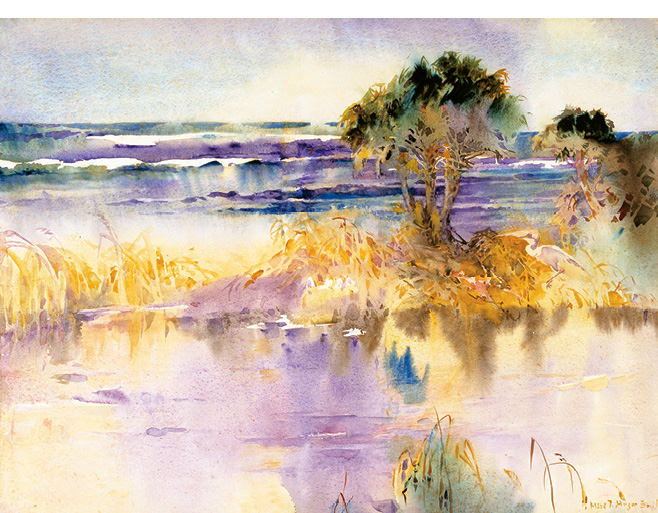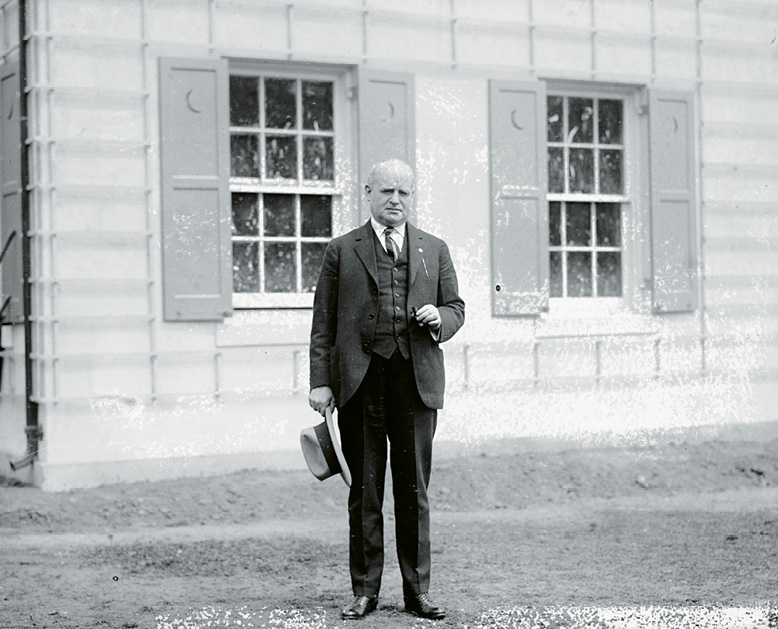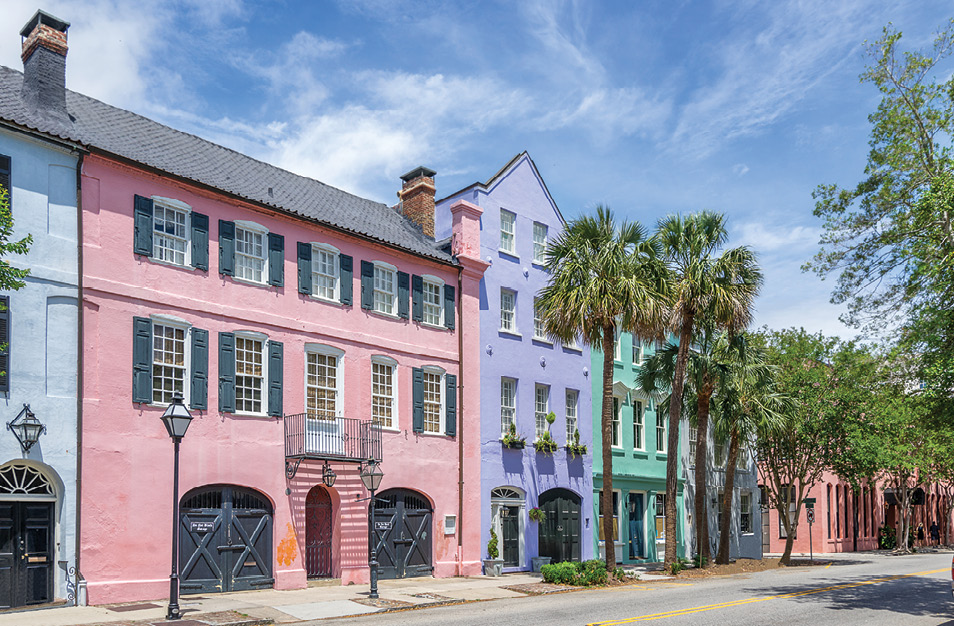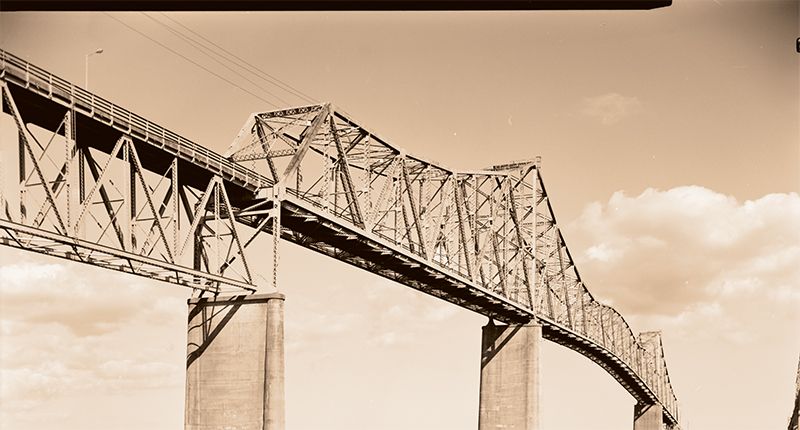(From the Historic American Engineering Record/courtesy of Library of Congress)
- 1920: Preservation Begins - Susan Pringle Frost founds the nation’s first preservation society (originally called Society for the Preservation of Old Dwellings). Eleven years later, with the help of Dorothy Porcher Legge, she begins the restoration of a row of 18th-century buildings on East Bay Street, marking the first time historic Charleston structures are renovated from slums and beginning an era of gentrification. Frost and Legge purchase and renovate the buildings with their own funds, paint them in Caribbean pastels, and name the block “Rainbow Row.”
- 1920: Folly Beach Causeway Opens - Although the road connecting James and Folly islands is ready for cars on July 1, only owners of lots on Folly or those provided a pass are allowed to visit. In 1921, however, the island is opened to all who want to come out to the beach, and oceanfront lot prices soar to $2,000.

A Lagoon by the Sea (watercolor on paper, circa 1935) from the series “A Carolina Rice Plantation of the Fifties” by Alice Ravenel Huger Smith. (Image courtsey of Gibbes Museum of Art/Carolina Art Association)
- 1920: The Charleston Renaissance - With the founding of the Poetry Society on November 17 and the publication of The Dwelling Houses of Charleston, South Carolina by Alice R.H. Smith, the Holy City regains its place in American culture. Local artists, such as DuBose Heyward, Elizabeth O’Neill Verner, and Alice Ravenel Huger Smith, produce poetry, plays, paintings, and novels, helping spark a surge in the arts not seen since before the Civil War. As the country wakes up to Charleston’s cultural offerings, other well-known artists of the day, such as Alfred Hutty, flock to the city, as do a wave of tourists intent on seeing a new vision of the Old South.

Josephine Baker dancing the Charleston at the Folies Bergère, Paris, in 1926 (courtesy of Wikipedia)
- 1920s: The Dance “The Charleston” Sweeps the Nation - Who would have thought that the rescue of four homeless African American boys huddled on a Charleston street in 1891 would lead to the “cat’s pajamas” dance craze nearly 30 years later? But that’s exactly what happens after the Rev. Daniel Joseph Jenkins establishes the Jenkins Orphanage. Within four years, it houses 500 children, and a band is formed to raise money for the institution. By 1920, there are five Orphanage Bands touring the United States. Their exceptional musical talent and intriguing movements help define early jazz and introduce “The Charleston” dance to the nation. Learn more about Rev. Jenkins and his musical genius son, and learn to dance “The Charleston.”

Mayor John P. Grace, for whom the Grace Memorial Bridge was named in 1929 (courtesy of Library of Congress)
- 1929: Grace Memorial Bridge Connects East Cooper - The first automobile crosses the nearly two-mile, two-lane bridge spanning the Cooper River on August 8, and for the first time, Charleston is linked to East Cooper by roadway. Touted as a modern masterpiece and named in honor of former mayor John P. Grace, the cantilever truss bridge is the fifth longest cantilever span in the world and opens the way for the urbanization of Mount Pleasant. In 1964, it’s joined by the Silas N. Pearman Bridge.
- 1930: Public Library Is Established - As the existing libraries in Charleston are all private institutions open only to members, a group of prominent citizens meets at Ashley Hall to discuss the formation of the first free library. With the assistance of generous donations from civic organizations, its certificate of incorporation is approved on May 23. On January 1, 1931, the library opens in the original Charleston Museum, with historian Laura Bragg as head librarian.

Rainbow Row (courtesy of Gordon Bell)
- 1931: Preservation Ordinance Enacted - On October 19, the City Council passes an ordinance creating the country’s first historic district and granting power to a Board of Architectural Review (BAR) to protect historic structures. The BAR ensures “the preservation and protection of the old historic or architecturally worthy structures and quaint neighborhoods which impart distinct aspect to the City of Charleston.” The BAR continues to review all exterior alterations in Charleston’s Old and Historic districts, including new construction. It costs homeowners $30 to have the BAR approve a new paint color.
- 1932: Peoples National Bank Fails - On January 1, 1932, the bank on Broad Street fails, taking the city’s payroll with it—the single worst hit to the Charleston economy during the Great Depression. Paper script is issued to employees instead of currency.
- 1933: WPA Puts People to Work - The WPA (Works Progress Administration), FERA (Federal Emergency Relief Agency), and other New Deal programs employ hundreds to improve streets, save historic records, attend college, landscape the city, restore the Dock Street Theatre, and erect buildings on the College of Charleston and Citadel campuses. The WPA program also includes the Federal Writers Project, sending Lowcountry authors far and wide to interview and record the life histories of everyday people, many of whom had been alive during slavery. These invaluable oral histories are now accessible through the Library of Congress.

(Photo by Ivan Cholakov)
- 1941: Charleston Air Force Base Opens - Four days after Pearl Harbor, the US Army Air Corps requisitions the original Charleston Municipal Airport. Eleven years later, the US Air Force begins using and improving the facility, creating thousands of civilian jobs and spurring growth in the North Area.
- 1945: Tobacco Workers Strike at Cigar Factory - A group of primarily African American tobacco workers walks out of the segregated Cigar Factory, crippling one of the city’s most prosperous industries. The strike lasts for five months, mostly during a brutally cold, wet winter. However, its eventual success lays the groundwork for the civil rights movement two decades later and elevates the song “We Shall Overcome” as the movement’s anthem.

Frances R. Edmunds & the Aiken Rhett House (courtesy of Historic Charleston Foundation & James Kirkikis)
- 1947: Historic Charleston Foundation Is Established - This organization, headed by Frances R. Edmunds for nearly 40 years, sets the pace for national preservation strategies. In addition to shaping policies at the local, state, and national levels, the foundation’s groundbreaking initiatives include the protection of Charleston’s architectural, historical, and cultural heritage; the rehabilitation of the Ansonborough, Radcliffeborough, and Elliotborough neighborhoods; and the establishment of the Lowcountry Open Land Trust. Meet longtime HCF director Kitty Robinson before her retirement.






